Does your home's air feel uncomfortably dry? 4 ways to quickly increase humidity – including steam tricks and home heating hacks
HVAC experts explain how to increase the humidity in your home to alleviate dry air without the risk of mold
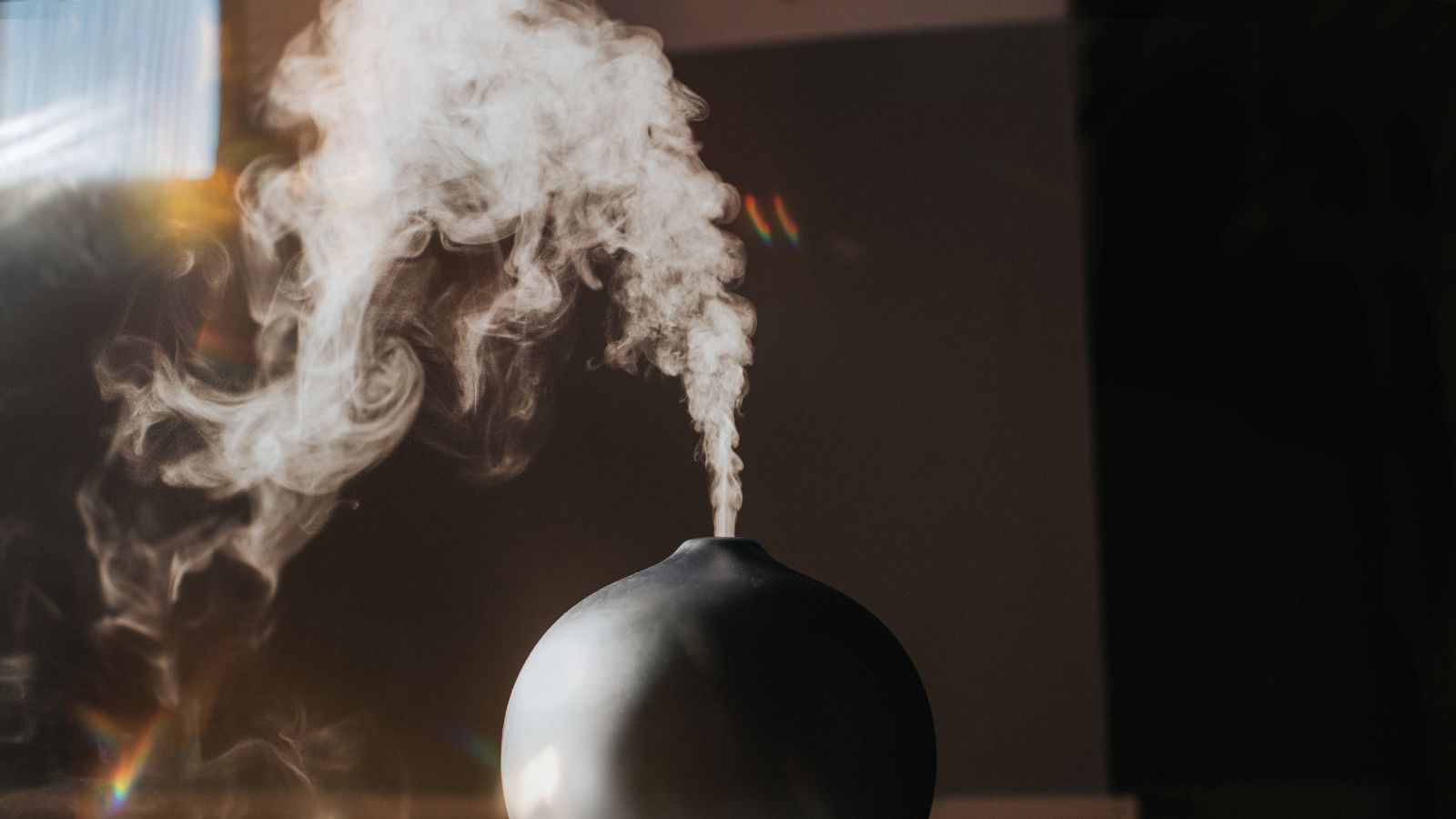

Struggling with dry air in your home? Low humidity can leave your skin dry, your furniture cracked, and houseplants wilting.
Luckily, there are several quick and easy ways to increase the humidity in your house without increasing the risk of mold.
Here, HVAC experts reveal the best ways to carefully increase moisture and explain why you should always address low humidity in your home.
How to increase the humidity in your home
If you're wondering, why does my house feel dry, then there are several reasons, ranging from cold winter weather to 'thirsty' furniture and poor ventilation – and ignoring dry air can quickly lead to respiratory irritation and skin conditions, making you sick over time.
So, in order to make sure you're keeping the best humidity levels for a home year-round to keep your home and your family healthy, we're here with expert advice on how to increase the humidity in your home.
1. Use humidifiers
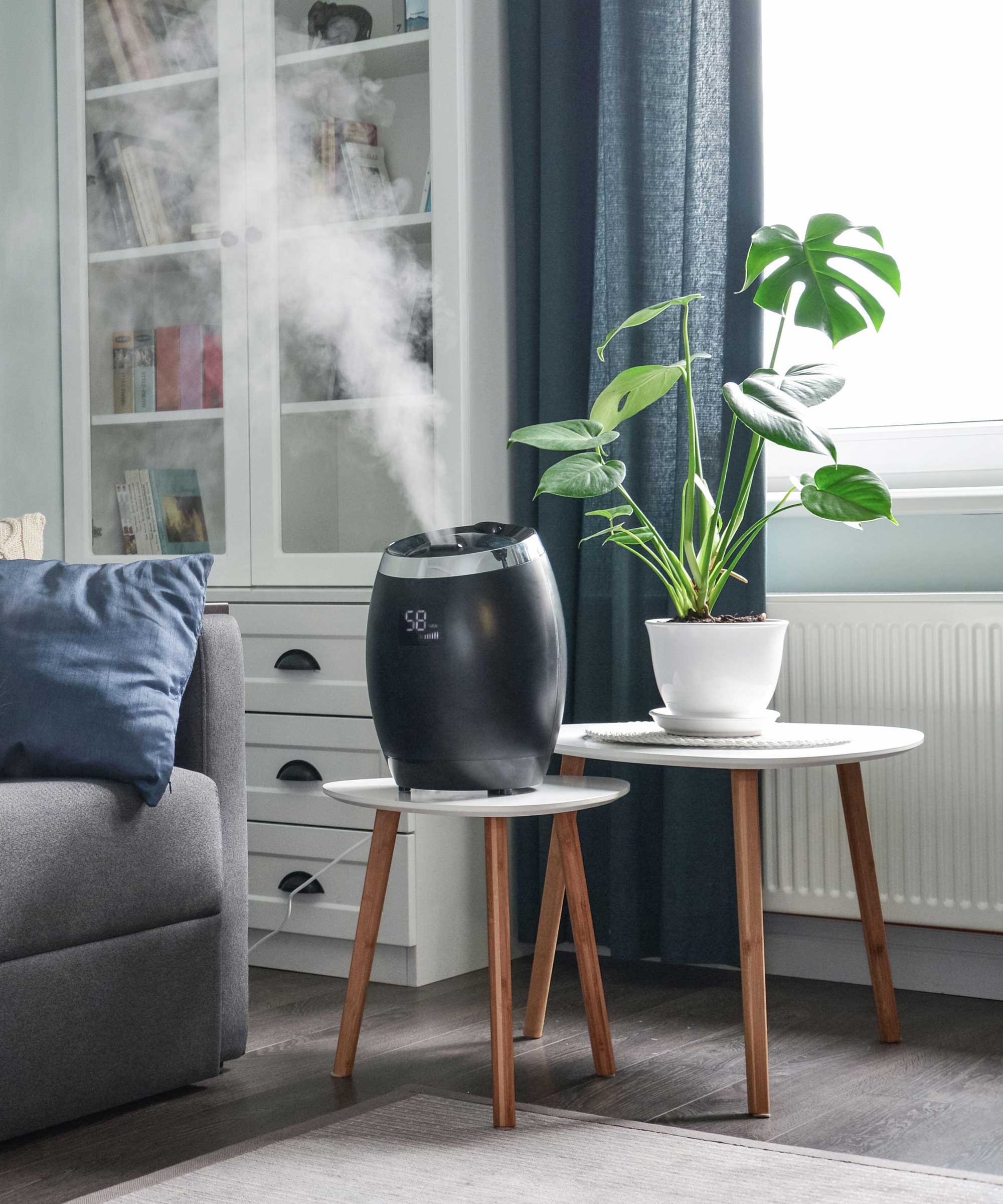
Humidifiers can be a great way to increase humidity for houseplants, too.
Of course, the quickest and easiest way to increase humidity in a house is with a humidifier.
Ben Baca, implementation manager and HVAC expert at SmartAC.com says there are two main options for humidifiers – whole home, and standalone.
He explains, 'Whole home humidifiers which are installed on your central heating system, are the most effective and convenient. These will generally either be an evaporative or steam style. Evaporative-style are not able to produce as much humidity as steam humidifiers but they are cheaper to run. Steam humidifiers, on the other hand, use electricity to boil water and are capable of producing large amounts of humidity. The convenience of a whole-home humidifier is being able to control the humidity in the whole home with one central control and a couple presses of a button.
'Standalone humidifiers are generally more cost-effective than whole home humidifiers but are not nearly as convenient and require much more intervention. These are available in cool mist or warm mist styles. Cool mist uses ultrasonic frequencies to create microdroplets of water that evaporate into the air. Cool mist humidifiers will produce “white dust” as a byproduct. This dust is the dissolved minerals in tap water that get left behind in the home after the water evaporates. This white dust is not harmful to humans but may cause respiratory irritation for sensitive people, will clog air filters, and generally leave a bit of mess around the home. Warm mist humidifiers operate similarly to steam humidifiers. They use electricity to heat the water and evaporate it into the air. Warm mist humidifiers do not produce white dust.'
When using humidifiers, consider investing in a humidistat, such as the ThermoPro Mini Hygrometer from Walmart, which comes with a thermometer built-in. Humidistats are small monitoring devices that keep tabs on how moist the air is in your home. They can alert you to dangerous humidity levels that could result in mold growth so you know when to turn appliances off. We explore these further in our, what is a humidistat feature.
All prices correct at time of publication.
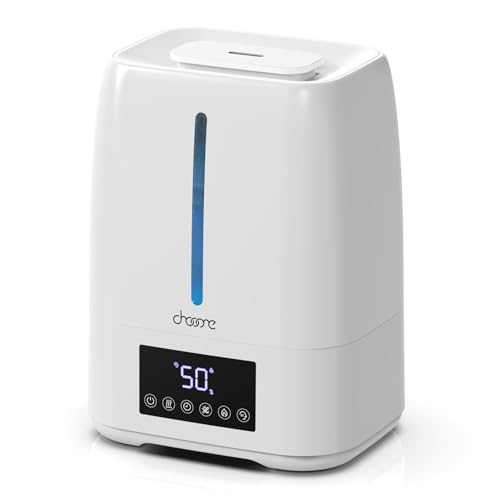
This small humidifier offers both cool and warm misting settings. Warm air mist to help alleviate irritated sinuses, and cool most to help with dry skin.

Ben has over a decade of experience in the HVAC industry, having worked as a quality control inspector, trainer, and manager. As a real-world HVAC subject-matter expert, Ben has an in-depth technical knowledge of all things installation, maintenance, and repair, and has led several training programs on HVAC systems and their problems.
2. Trap steam after showers
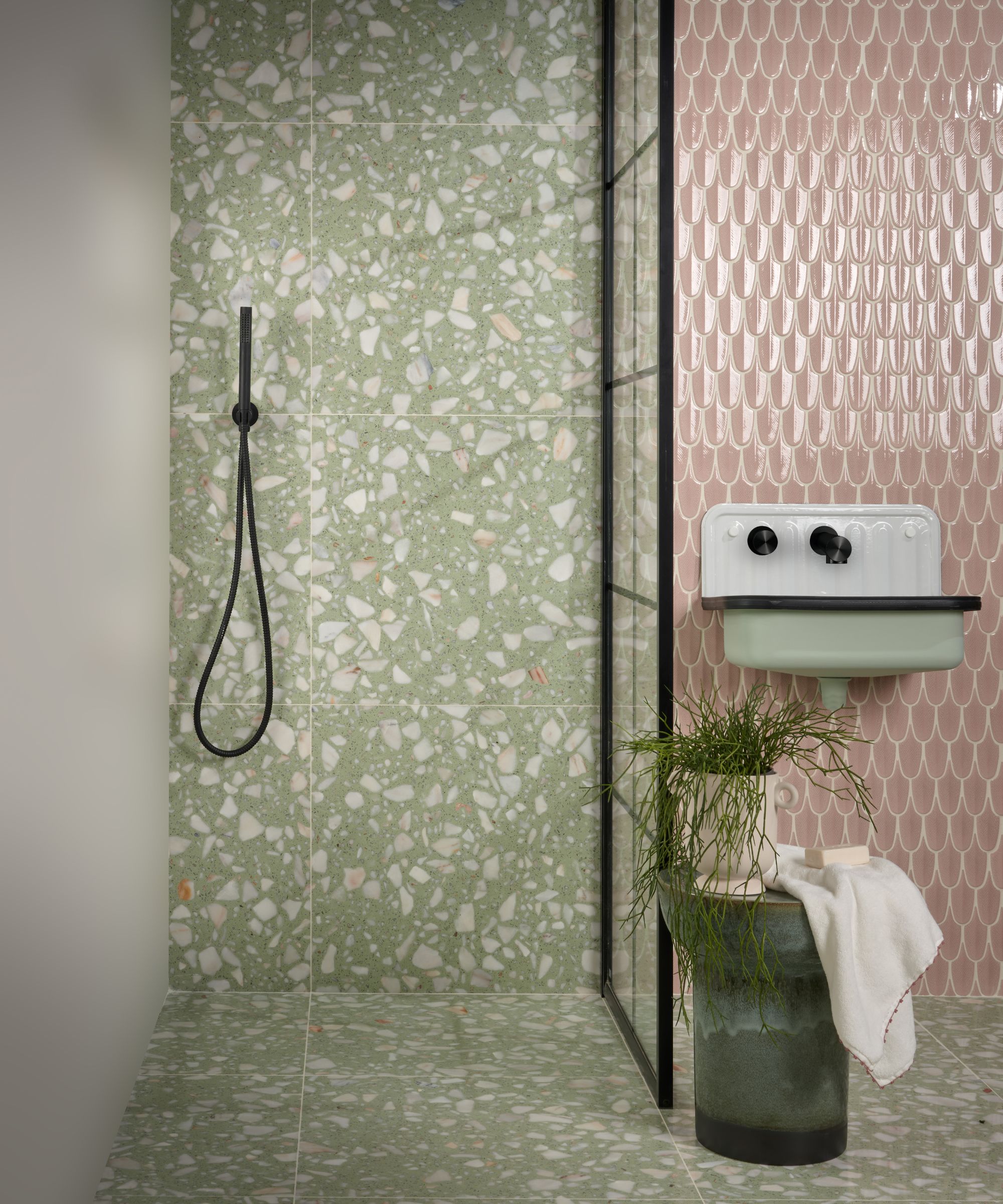
Hotter showers produce more steam, increasing indoor humidity more quickly.
Although we usually recommend ways to improve bathroom ventilation to reduce your home's humidity, trapping steam from a shower can help to quickly and temporarily increase indoor humidity to alleviate dryness.
Ben Baca continues, 'Taking a long hot shower and boiling water or cooking a meal are more temporary solutions to indoor humidity levels and are not very efficient or controlled. These methods will work in a pinch, however.'
To do this, close windows and turn off extractor vents during high humidity activities, keeping internal doors open to allow the moist air to travel through your home. It is best to avoid leaving doors closed and trapping all the moist air in one room, as this is a bad habit that increases the risk of mold in your home.
3. Invest in houseplants
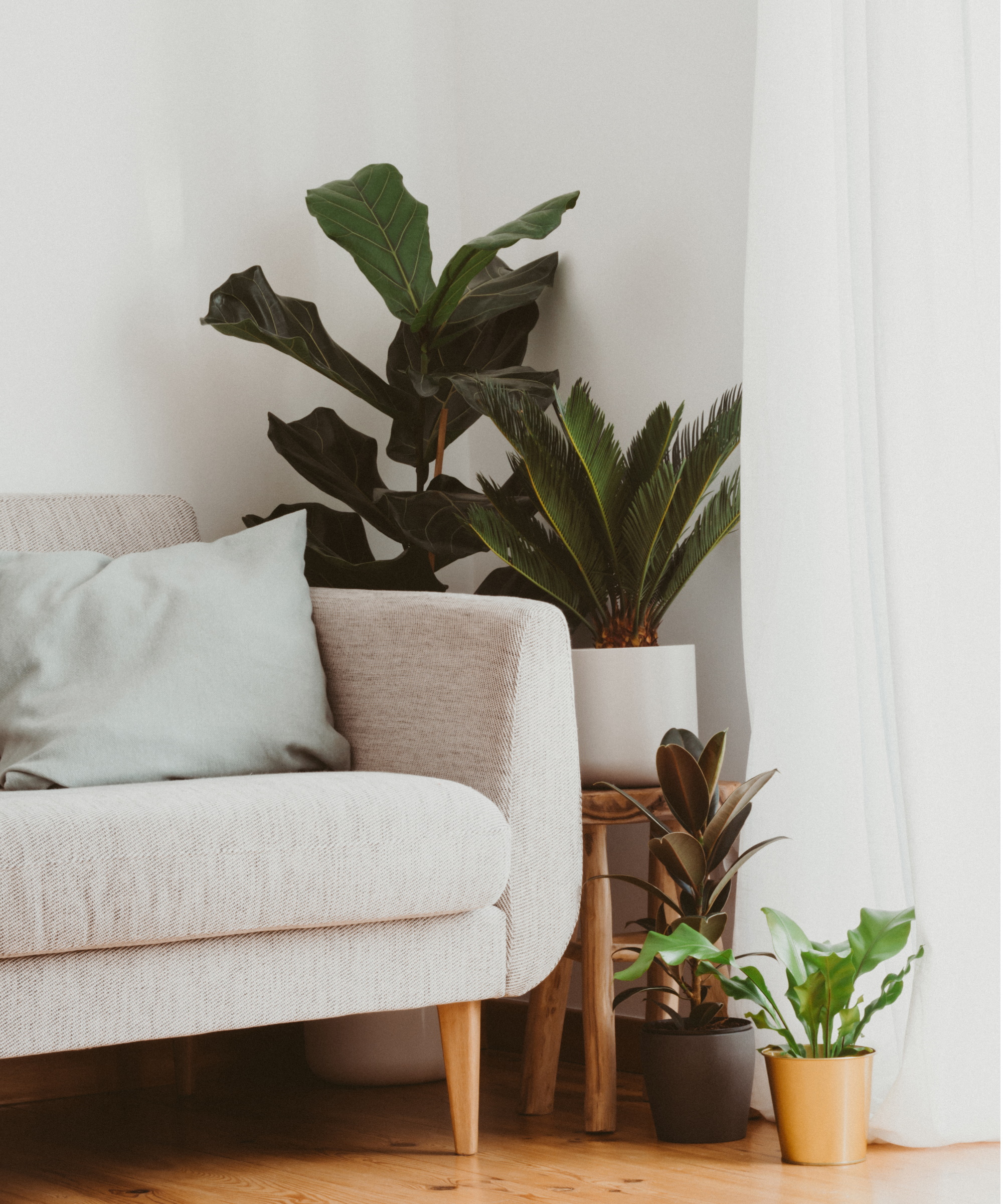
You will need a few houseplants to make a noticeable difference in humidity.
Geno Caccia, plumbing and HVAC expert, and owner of Caccia Plumbing suggests picking up some of the best houseplants for low humidity.
He says, 'One of the best ways to increase humidity is by adding plants, especially species that naturally release moisture in the air (peace lilies, Boston ferns, areca palms are all great options). A friend of mine in a very dry part of Canada has his house littered with variations of the plants above, and his house was more humid than mine and I live on the coast.'

Peace Lilies are generally easy to care for, requiring watering once per week. Be aware these plants are toxic to cats and dogs.

Boston ferns are a great low-maintenance plant, but can be very thirsty, requiring two to three cups of water per week.
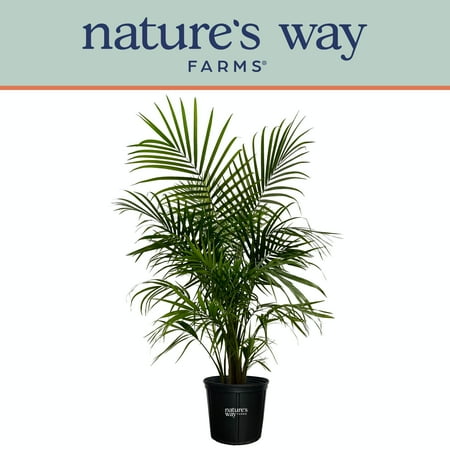
These large palm plants are great for increasing indoor humidity but require regular water misting to keep them healthy.

Geno Caccia is the CEO of Caccia Plumbing Inc. As a third-generation plumber, Geno grew up in the family business, gaining invaluable experience in the field.
Geno is also a keen advocate for the health and safety of both clients and tradesmen.
4. Place water near a heat source
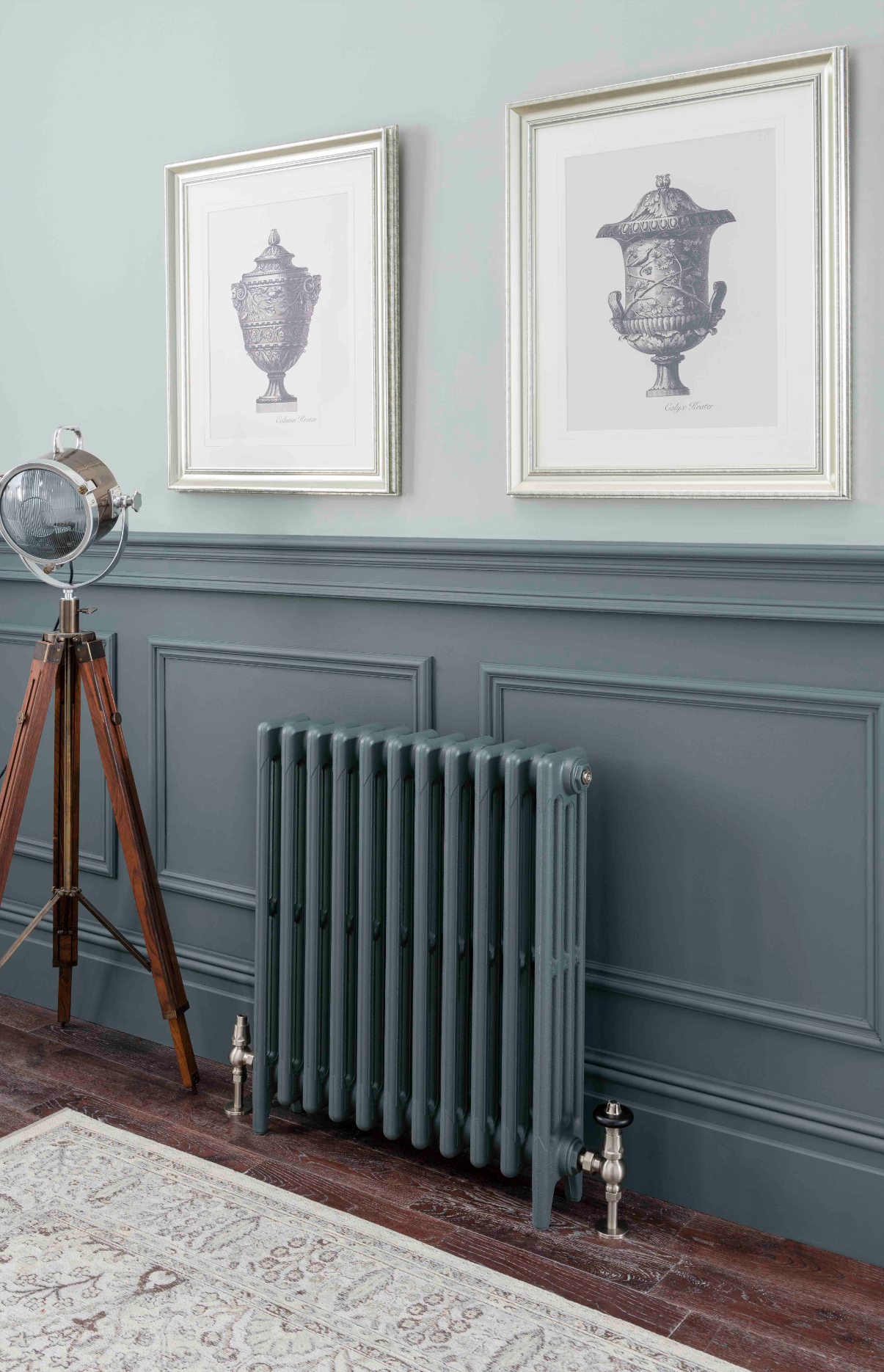
Placing water on top of a radiator or next to a heat vent will have the same effect.
When increasing humidity in a house in winter, consider making the most out of your home heating types.
Marc Jiggins, managing director at Pyramid Eco suggests, 'Placing a bowl of water near a radiator or heating vent lets it evaporate gradually, adding gentle humidity to the air.'
To do this, use a glass bowl, available at Walmart, as it will not melt like plastic, and will not become as dangerously hot as a metal bowl.
He adds that this helps to increase the humidity slowly, reducing the risk of mold. 'Increasing humidity should always be done in moderation. Over-humidifying can lead to condensation on windows, dampness, and mold growth, which bring their own problems.'
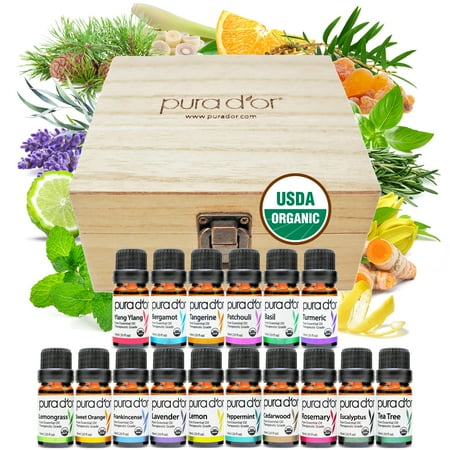
Consider adding a few drops of essential oil to the water in the bowl. As it evaporates, the scent will be released into the air, helping to make a home smell nice naturally.
FAQs
Why should you maintain humidity in your home?
While it is a good idea to stay on top of humidity to prevent mold, drying your home out completely can have te opposite effect and make you equally as sick.
Geno Caccia, plumbing and HVAC expert explains, 'Dry indoor hair can cause significant discomfort which leads to dry skin, irritated sinuses and can even harm furniture and flooring, especially wood materials. Naturally, in many parts of the states this is most common winter winter when the heating systems tend to dry out the air Humidity levels between 30-50% are typically what I and other experts would recommend. Its low enough mold shouldn't grow but high enough to keep the air comfortable and help reduce static electricity.'
When increasing your home's humidity, it is always wise to check for mold in your house, as catching it early can stop it from spreading or becoming a structural issue. We also recommend using some cheap ways to stop mold to limit its impact, too.
Sign up to the Homes & Gardens newsletter
Design expertise in your inbox – from inspiring decorating ideas and beautiful celebrity homes to practical gardening advice and shopping round-ups.

Chiana has been at Homes & Gardens for two years and is our resident 'queen' of non-toxic living. She spends most of her time producing content for the Solved section of the website, helping readers get the most out of their homes through clever decluttering, cleaning, and tidying tips. She was named one of Fixr's top home improvement journalists in 2024.
You must confirm your public display name before commenting
Please logout and then login again, you will then be prompted to enter your display name.
-
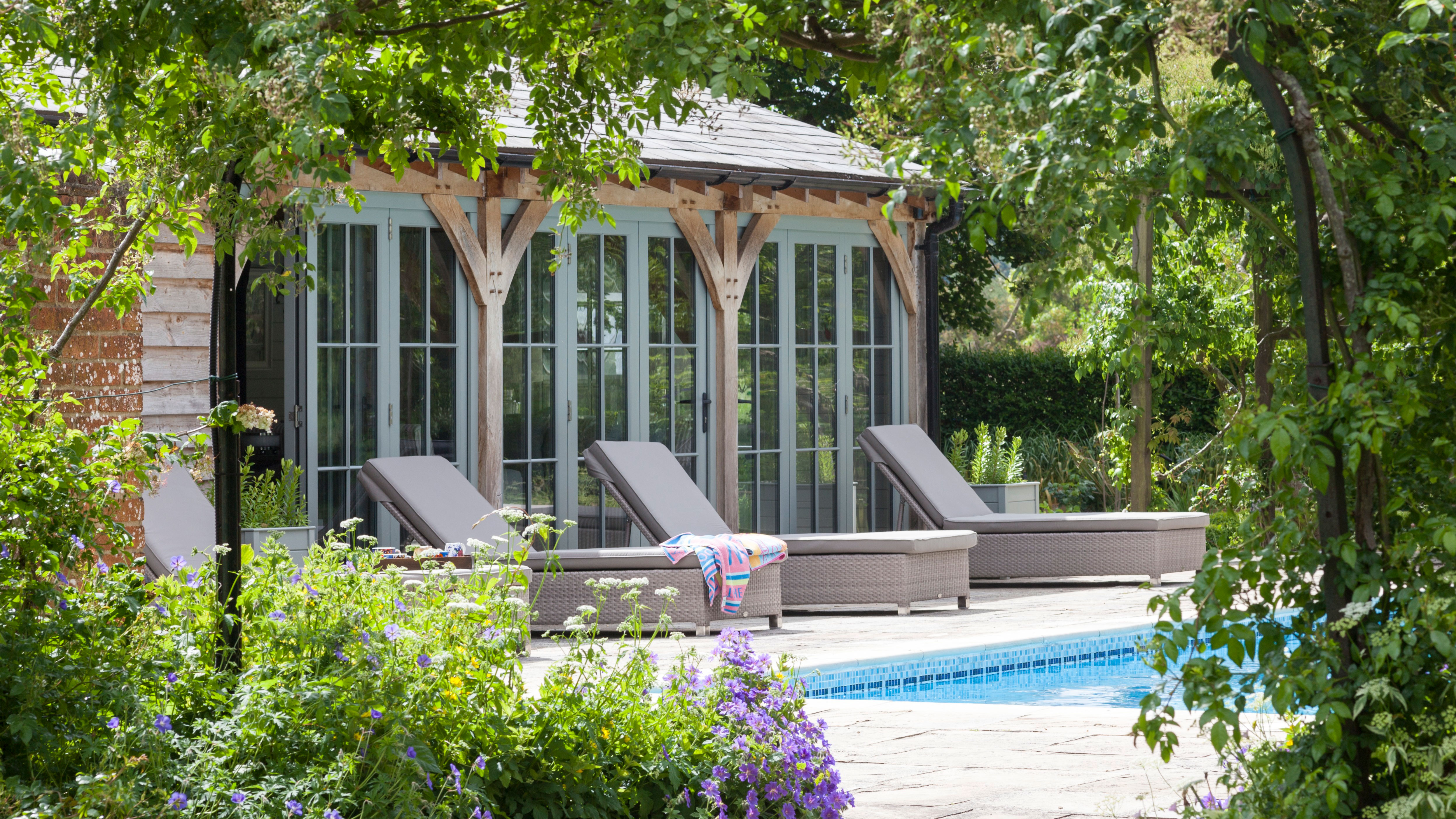 Lidl's brand-new garden lounge chair is so good they've had to limit it to only 2 per a customer – it is low in stock, so you'll need to act fast
Lidl's brand-new garden lounge chair is so good they've had to limit it to only 2 per a customer – it is low in stock, so you'll need to act fastHampton's style is hiding in the Lidl aisles thanks to this budget-friendly recliner
By Jennifer Ebert
-
 Kylie Jenner, Tommy Hilfiger, and Lenny Kravitz transform their homes with prints – the London Original Print Fair Director has a method that makes their look 'accessible and affordable' in your home
Kylie Jenner, Tommy Hilfiger, and Lenny Kravitz transform their homes with prints – the London Original Print Fair Director has a method that makes their look 'accessible and affordable' in your homeCelebrities from the Kardashians to Lenny Kravitz decorate their homes with prints by famous artists, and it's easier to recreate than you might expect
By Sophie Edwards
-
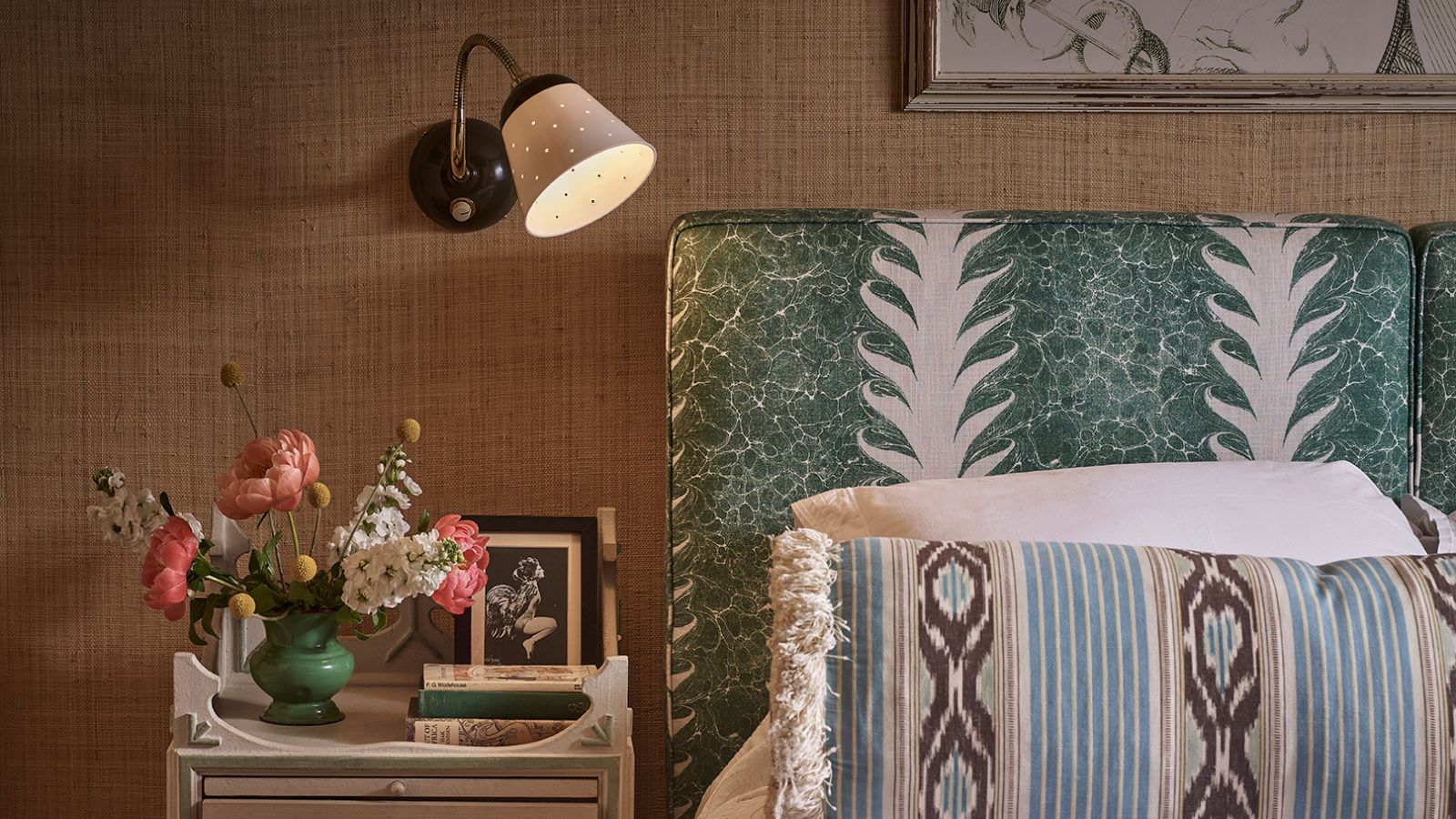 Do you need to turn the lights off when you leave a room? Experts have ended this time-honored debate once and for all
Do you need to turn the lights off when you leave a room? Experts have ended this time-honored debate once and for allOn or off? We delve into the details of this age-old dispute
By Chiana Dickson
-
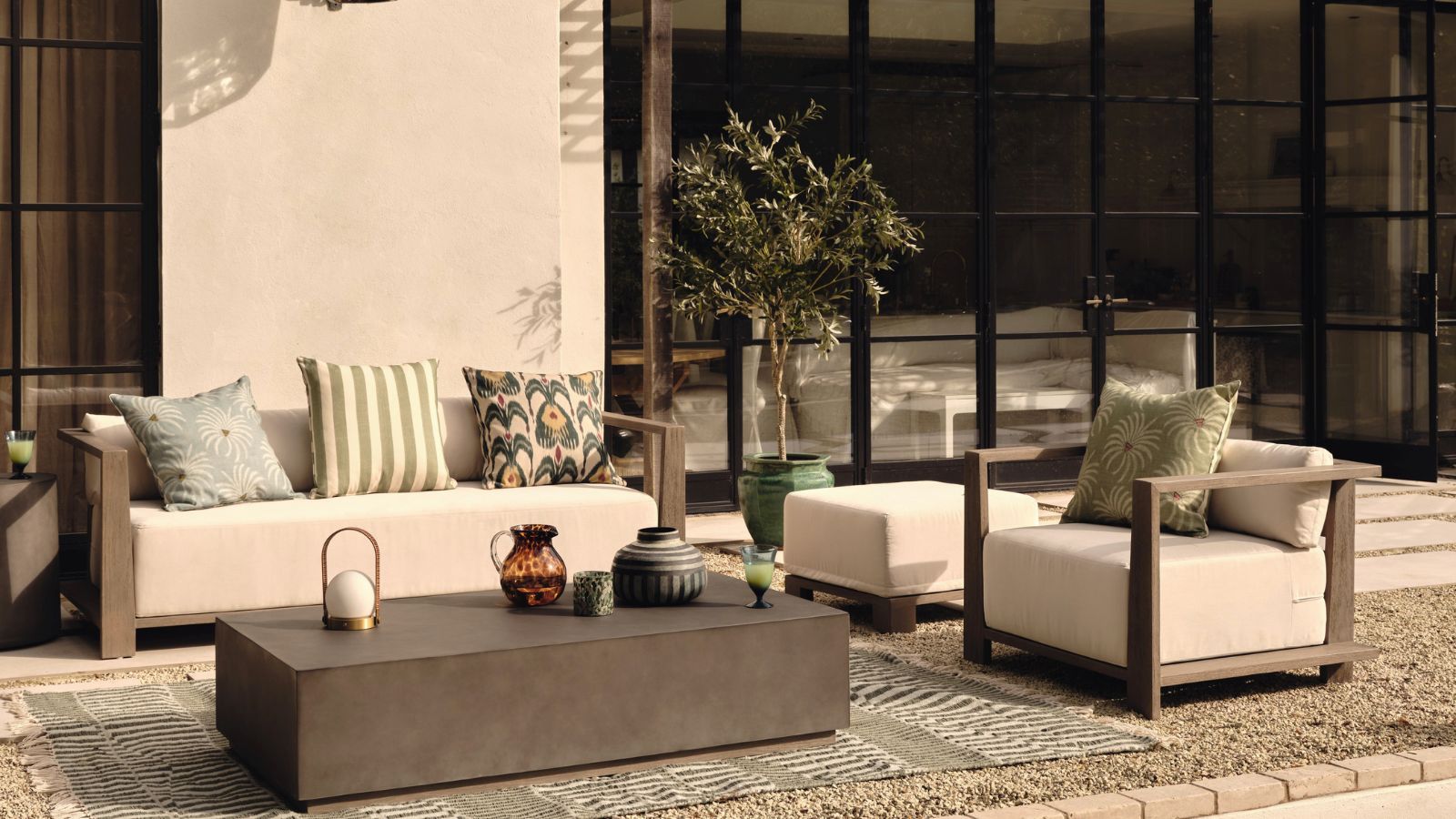 I tried the baking soda trick to quickly and naturally clean my outdoor rug – it’s now set for Easter outdoor hosting
I tried the baking soda trick to quickly and naturally clean my outdoor rug – it’s now set for Easter outdoor hostingBaking soda is perfect for lifting dirt and debris
By Eve Smallman
-
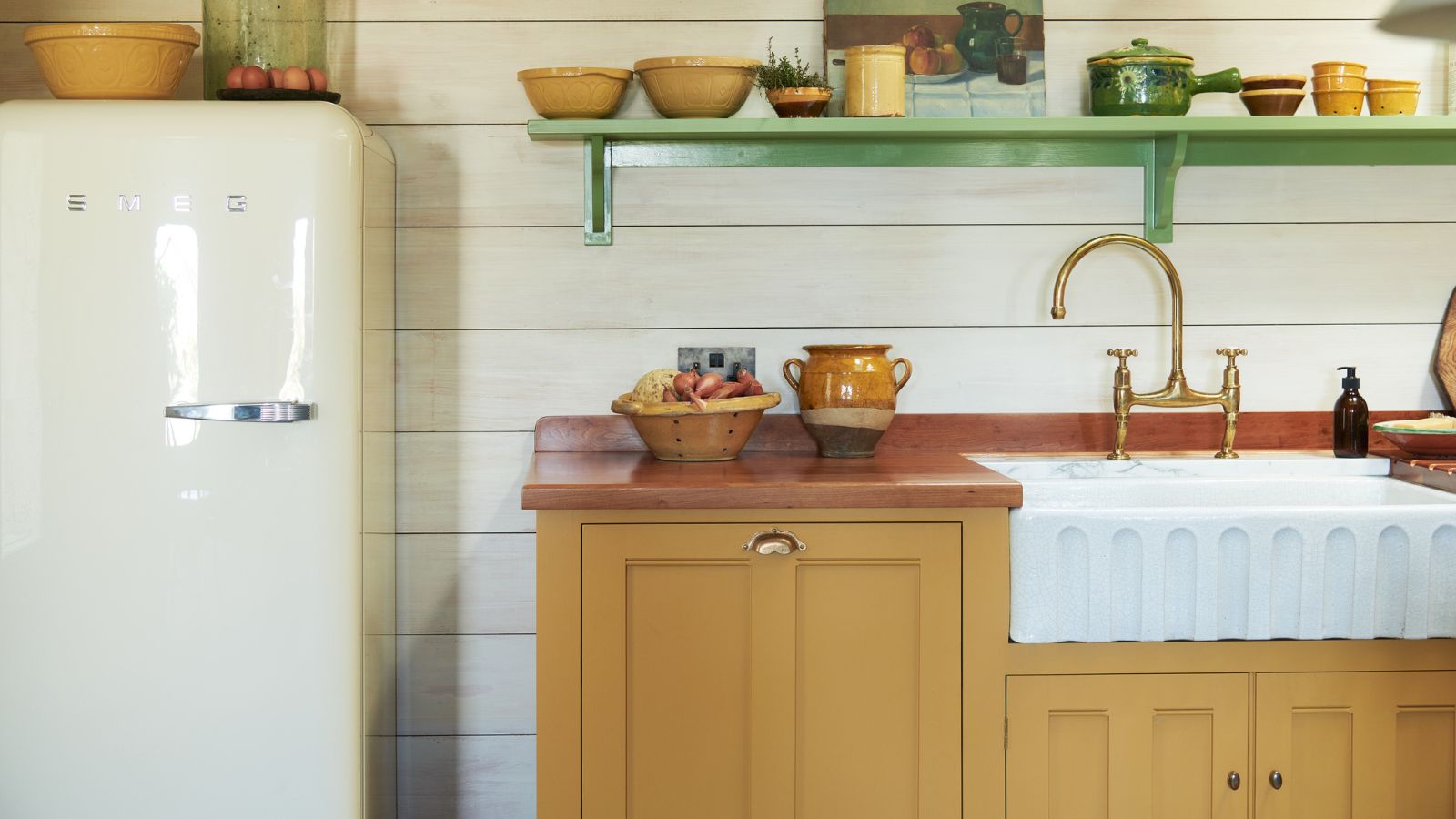 The 5 worst things you can do to your fridge – these will drive up energy costs and result in pricey and regrettable repairs
The 5 worst things you can do to your fridge – these will drive up energy costs and result in pricey and regrettable repairsIt's crucial to swerve these blunders, appliance experts warn
By Ottilie Blackhall
-
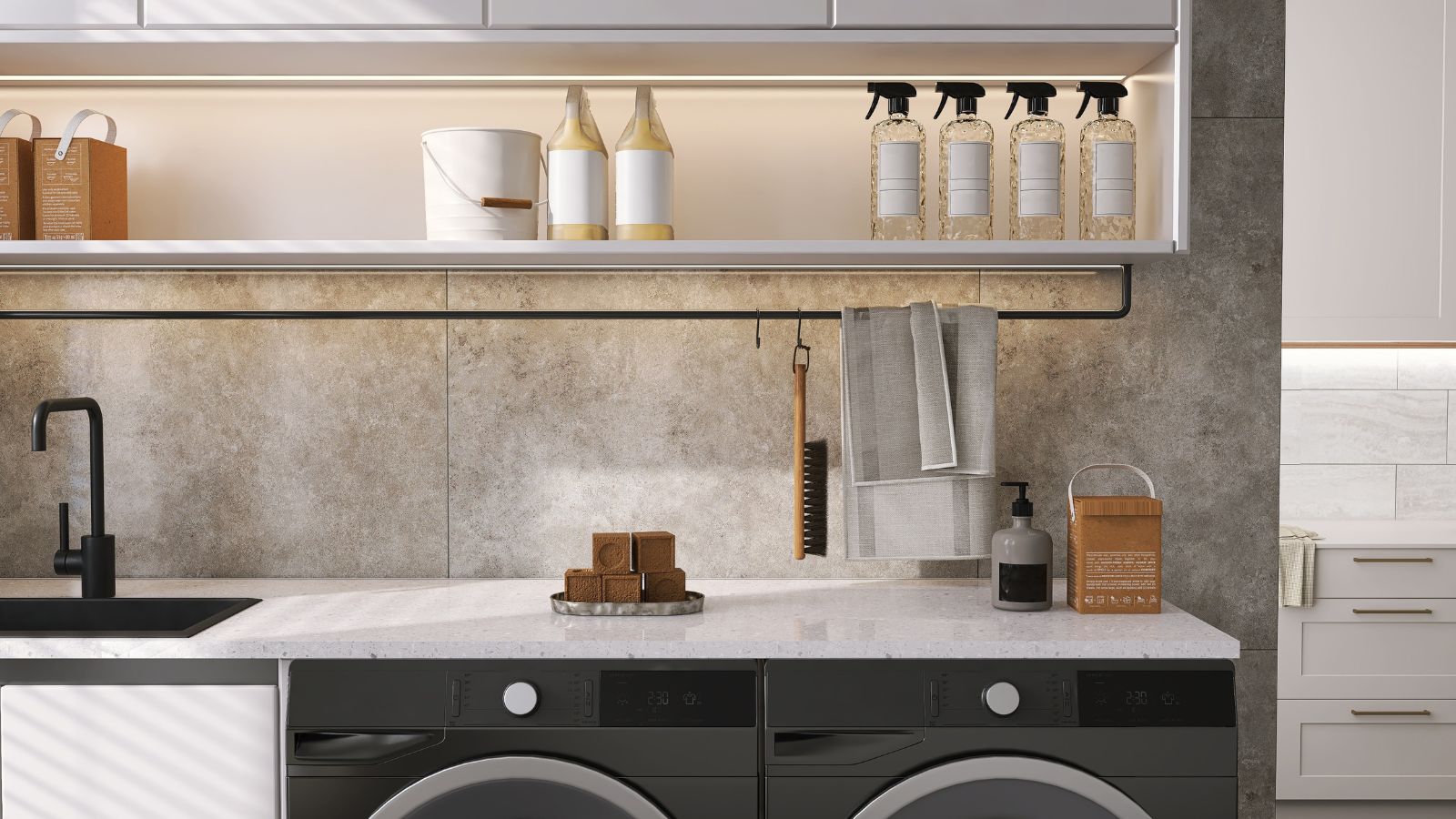 Extend the lifespan of your appliance with 5 simple but crucial washing machine maintenance tips
Extend the lifespan of your appliance with 5 simple but crucial washing machine maintenance tipsFrom cleaning the filters to keeping the door open, experts reveal the washer tips they swear by
By Andy van Terheyden
-
 5 vital ways a home battery backup can help with your most urgent needs in a power outage – from heating to flood prevention and calls
5 vital ways a home battery backup can help with your most urgent needs in a power outage – from heating to flood prevention and callsExperts say they're a worthy investment
By Clement Feng
-
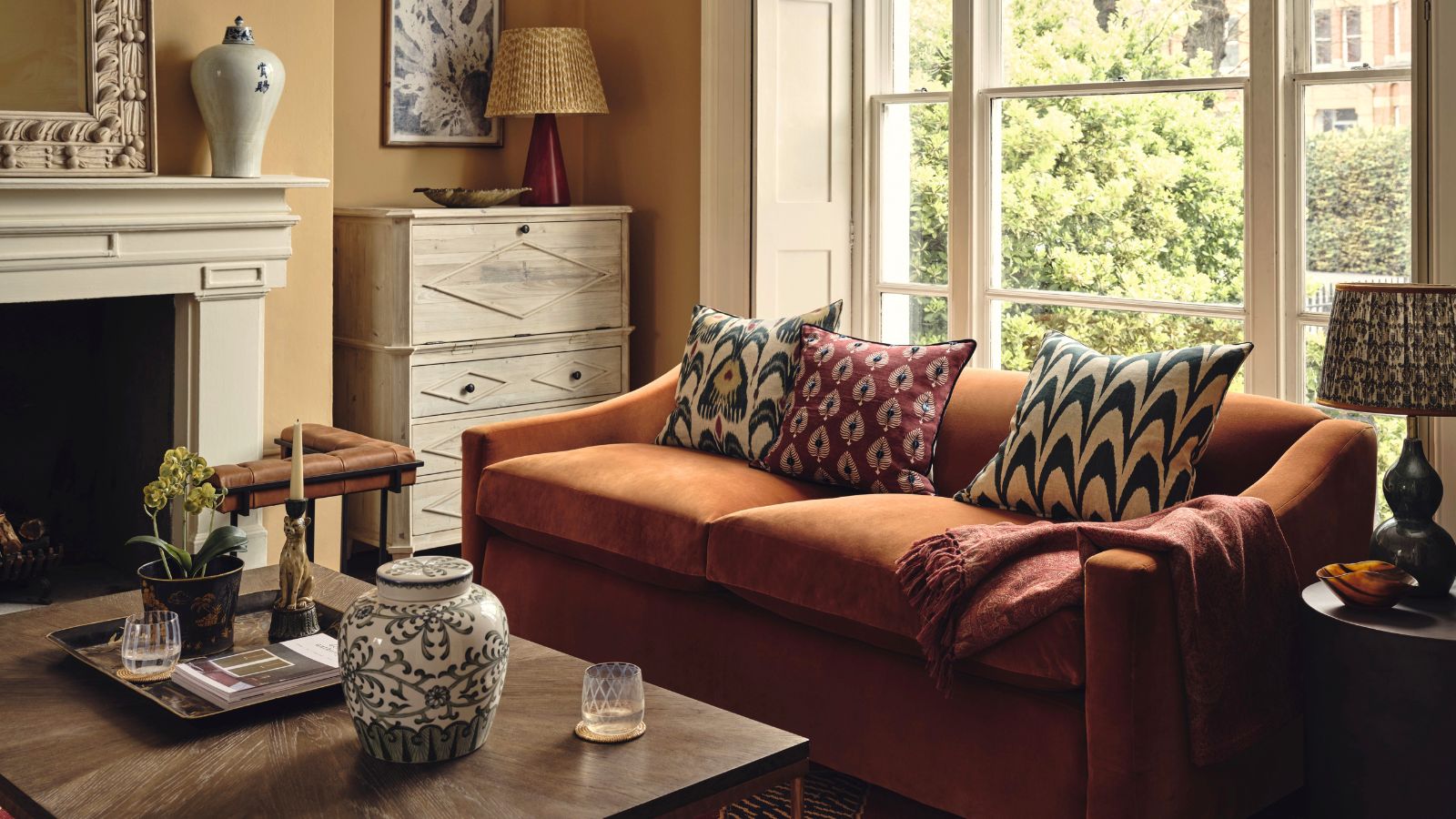 I’m an HVAC technician, and this is when I turn on my AC each year – plus 5 checks I always do beforehand
I’m an HVAC technician, and this is when I turn on my AC each year – plus 5 checks I always do beforehandSave yourself an AC hassle by running my checks and turning it on before big heat hits
By Josh Mitchell
-
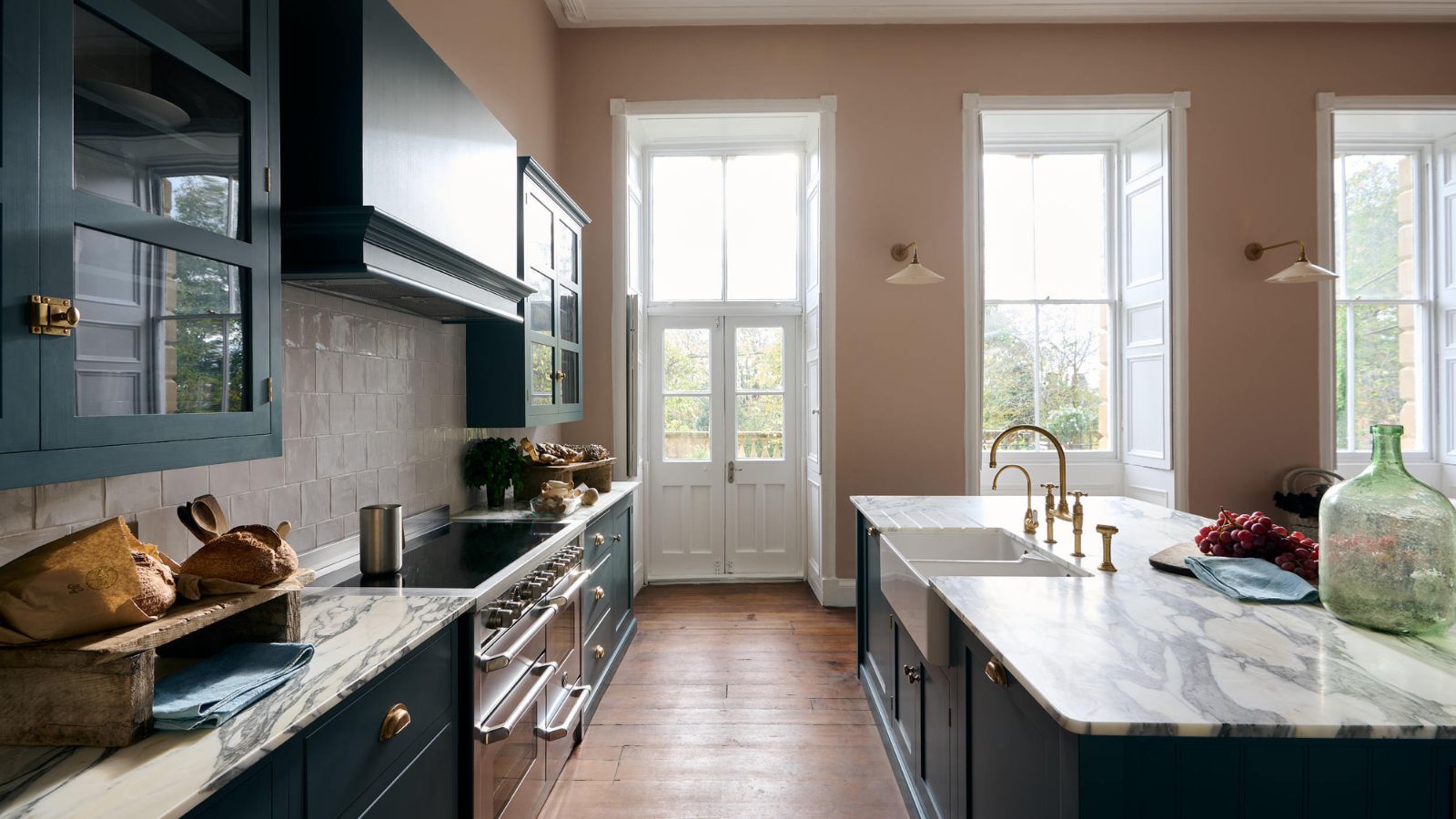 6 things you should never throw in the trash – and what to do for safe disposal instead
6 things you should never throw in the trash – and what to do for safe disposal insteadFrom batteries to space heaters, experts reveal what not to throw
By Andy van Terheyden
-
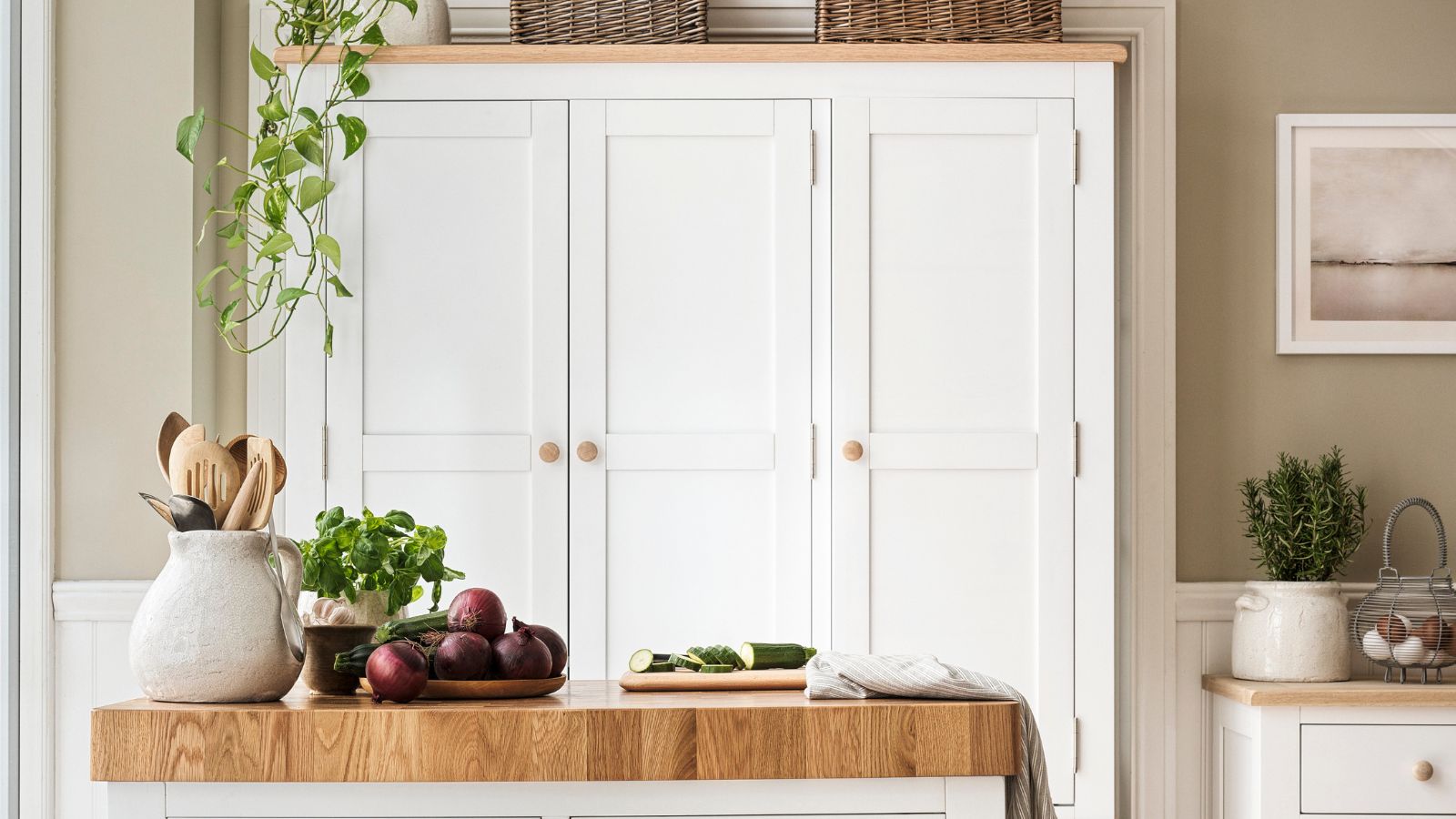 7 spring home maintenance mistakes to never make – overlooking these now can lead to pest problems and structural damage
7 spring home maintenance mistakes to never make – overlooking these now can lead to pest problems and structural damageHome improvement pros share common mistakes and what to do instead
By Eve Smallman